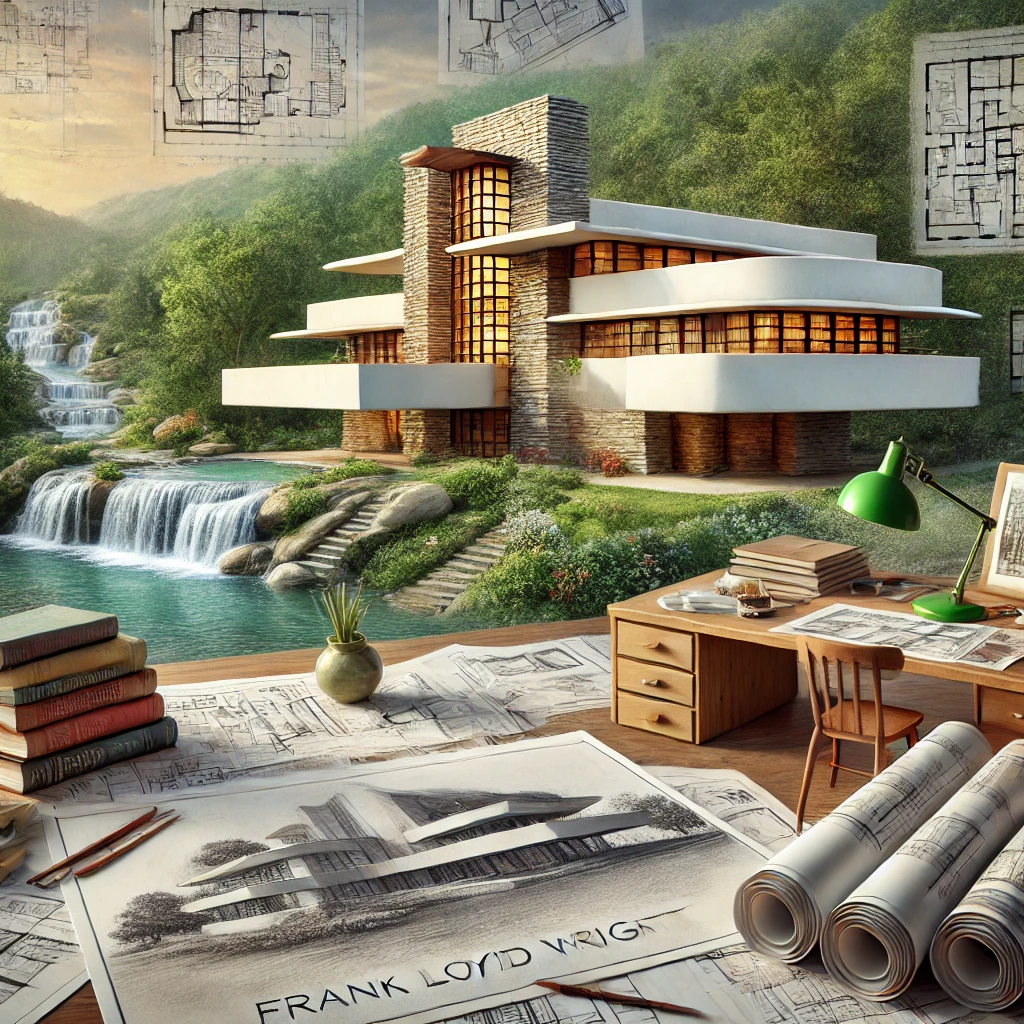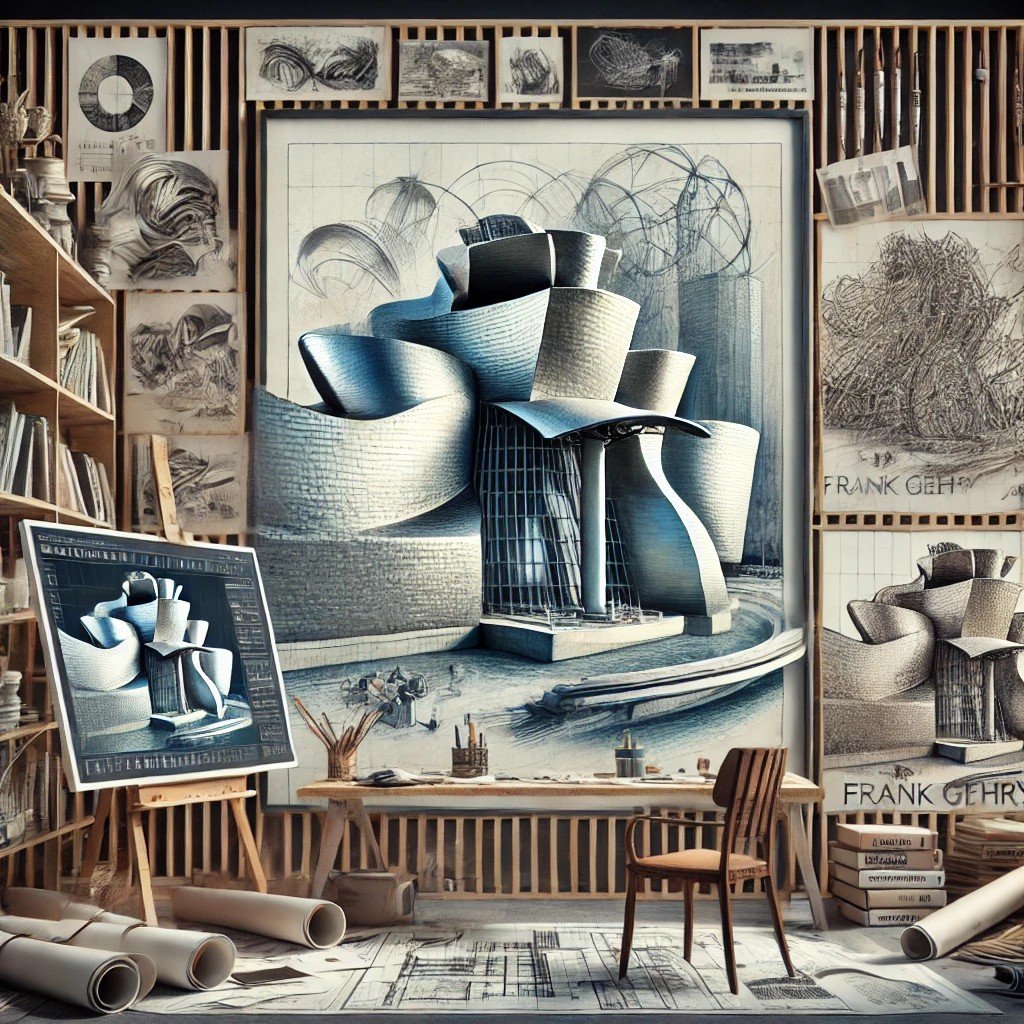Architectural concepts are the foundation of every great design, guiding decisions related to form, function, materiality, and experience. The best architectural works are not just aesthetic compositions but are deeply rooted in conceptual frameworks that respond to site conditions, narratives, and structural innovations.
By analyzing the works of renowned architects such as Frank Lloyd Wright, Le Corbusier, and Frank Gehry, we can better understand how concepts translate into real-world projects. This article explores different conceptual approaches—site-driven, narrative-driven, and structural concepts—and examines historical and contemporary lessons in architectural design.
Frank Lloyd Wright: The Master of Site-Driven Concepts
The Philosophy of Organic Architecture
Frank Lloyd Wright pioneered the concept of organic architecture, a philosophy that sought harmony between human habitation and the natural world. His site-driven approach emphasized that architecture should emerge naturally from its surroundings, integrating materials, form, and spatial organization with the landscape.

Case Study: Fallingwater (1935)
One of the most celebrated examples of site-driven architecture is Fallingwater, designed for the Kaufmann family in Pennsylvania. Wright’s concept was to merge the home with the waterfall rather than merely offering a view of it. Several key principles defined his approach:
- Integration with Nature: The house is built directly over the waterfall, with cantilevered terraces extending over the rushing stream. This approach reinforces the connection between architecture and the natural landscape.
- Material Selection: Wright used locally sourced stone and concrete to mirror the rock formations found on the site.
- Open Plan & Spatial Flow: He designed spaces that extend outward, allowing interior and exterior elements to blend seamlessly.
- Low Profile & Organic Form: Instead of dominating the landscape, the home becomes part of it, emphasizing horizontal lines that mimic the surrounding topography.
Lessons from Wright’s Site-Driven Concepts
- Respect for Context: A site-driven concept should respond to and enhance its natural environment rather than impose upon it.
- Material Authenticity: Using locally sourced materials strengthens the connection between a building and its setting.
- Spatial Flow: The relationship between built and unbuilt space should be fluid, reinforcing the user’s experience of nature.
Le Corbusier: Narrative-Driven Architectural Concepts
The Philosophy of Modernism & The Five Points of Architecture
Le Corbusier revolutionized 20th-century architecture with his Five Points of Architecture, which defined a new language of modernism. His work was deeply conceptual, often rooted in narrative and ideological aspirations about the future of cities, society, and human living conditions.

Case Study: Villa Savoye (1929)
Villa Savoye, located in France, represents Le Corbusier’s vision of the modern home as a “machine for living.” The design is not merely about aesthetics but about redefining domestic life based on efficiency, movement, and health. Key conceptual aspects include:
- Pilotis (Structural Columns): Elevating the house on stilts allows the landscape to flow underneath, reinforcing a sense of openness.
- Open Floor Plan: Spaces are flexible, responding to the functional needs of a modern lifestyle.
- Ribbon Windows: Continuous horizontal windows provide panoramic views, emphasizing connection to the exterior.
- Roof Garden: The roof becomes an accessible, functional space, reflecting Le Corbusier’s belief in urban greenery.
- Free Façade: Structural independence allows for flexible wall placements, breaking from traditional load-bearing constraints.
Lessons from Le Corbusier’s Narrative-Driven Concepts
- Architecture as a Manifesto: Concepts can be ideological, challenging traditional norms and reimagining how people interact with space.
- Human-Centric Design: Architectural narratives should prioritize how people use and move through spaces.
- Integration of Function & Form: A strong concept should balance design innovation with practical living conditions.
Frank Gehry: Structural Expressionism and Deconstructivism
The Philosophy of Expressive Form
Frank Gehry is renowned for his deconstructivist approach, where buildings appear fragmented and sculptural rather than adhering to traditional symmetry and proportion. His work is driven by the exploration of materials, technology, and structure.

Case Study: Guggenheim Museum Bilbao (1997)
The Guggenheim Museum in Bilbao, Spain, is a radical departure from conventional museum designs. Gehry used computational design tools to create a complex, curvilinear form that has become an architectural icon. Key aspects of his structural concept include:
- Material Innovation: The titanium-clad façade reflects light in dynamic ways, changing appearance based on weather and time of day.
- Sculptural Form: The museum rejects traditional rectilinear forms, instead embracing fluidity inspired by the maritime history of Bilbao.
- Parametric Design: Gehry utilized digital modeling to create intricate forms that would have been impossible to design using conventional methods.
- Urban Regeneration: The building itself became a catalyst for economic and cultural revival in Bilbao, reinforcing the power of architecture beyond aesthetics.
Lessons from Gehry’s Structural Concepts
- Experimentation Leads to Innovation: Unconventional forms and materials can redefine architectural norms.
- Technology as a Design Tool: Computational design expands the possibilities of structure and form.
- Architecture as Cultural Symbolism: Buildings can shape not only the physical environment but also the identity of a place.
Comparing the Three Architects and Their Conceptual Approaches
| Architect | Conceptual Approach | Key Example | Design Focus |
|---|---|---|---|
| Frank Lloyd Wright | Site-Driven Concept | Fallingwater | Integration with nature, organic architecture |
| Le Corbusier | Narrative-Driven Concept | Villa Savoye | Modernist principles, human-centric design |
| Frank Gehry | Structural Concept | Guggenheim Bilbao | Deconstructivism, digital experimentation |
Each of these architects demonstrates a distinct method of conceptual thinking—Wright’s deep respect for nature, Le Corbusier’s modernist vision, and Gehry’s embrace of digital innovation. By studying their work, architects can explore diverse conceptual approaches that respond to different design challenges.
Lessons from Historical and Contemporary Architecture
The evolution of architectural concepts teaches us key principles that remain relevant today:
- Context Matters: Buildings should respond to their surroundings, whether through material selection, spatial orientation, or environmental sustainability.
- Concepts Need Depth: A strong architectural idea must go beyond aesthetics and engage with function, user experience, and broader societal implications.
- Innovation Comes Through Iteration: The most groundbreaking designs result from continual testing, refinement, and adaptation of ideas.
- Technology and Materials Shape Architecture: From Le Corbusier’s reinforced concrete to Gehry’s parametric modeling, advancements in materials and technology expand the possibilities of design.
- Architecture is Storytelling: Whether inspired by nature, modernist ideals, or artistic expression, every great building tells a story and creates an experience.
Conclusion
The works of Frank Lloyd Wright, Le Corbusier, and Frank Gehry illustrate the power of strong architectural concepts in practice. Their projects demonstrate how concepts rooted in site, narrative, or structure can shape meaningful and transformative architecture. By understanding these approaches, contemporary architects can develop innovative solutions that honor the past while shaping the future.
Architecture is more than just buildings—it is about ideas, context, and the dialogue between form, function, and experience. Whether designing for nature, human behavior, or structural exploration, strong concepts remain the driving force behind all great architecture.
Stay tuned for more architectural insights, case studies, and design strategies in future articles!

1 thought on “Case Studies: Architectural Concepts in Practice”